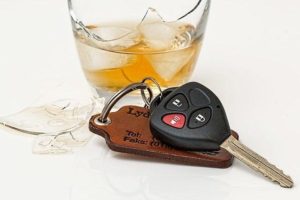For a free legal consultation,
call 1-800-668-6729
Motorcycling in Traffic: How to Ride Safely
Motorcycling in traffic is becoming more commonplace, as bikers use their bikes for commuting and day to day jaunts through town. Motorcycles used to be relegated to country rides through isolated, winding roads, but more and more bikers are taking to the (downtown) streets. This means, however, that bikers are riding through traffic. Busy intersections, bumper-to-bumper traffic, and the everyday congestion of city streets are becoming regular stresses for bikers. With increased traffic comes increased risk of accident and injury.
Motorcycling in Urban Areas- How to Remain Safe
- Remember you are invisible. Okay, it’s not that simple, but no matter how many gadgets, gizmos, and flashing lights you flash to make you visible, cagers often ignore the road around them. They are distracted by cell phones (unfortunately), music, screaming children… and with so many distractions it’s amazing there aren’t more crashes. Never, ever assume that a motorist can see you! Ride as if you are invisible at all times, and ride defensively. Even if you think you have made eye contact with a driver, do not assume they see you! I, personally, have been guilty of riding in the blind spot of cars around me. It’s easy to toss a few curse words when a cager starts veering into your lane, but if you were in their blind spot, the fault partially lies with you.
- Ride with an escape lane in mind. This is easy on back roads, where you have plenty of room around you in case of an oncoming hazard. But on busy city streets and congested highways, having an escape lane can be quite a challenge. If the driver ahead of you slams on their brakes, or if a car swerves into your lane, what will you do? Part of riding defensively is being aware of what you might do in the event of a near crash. This may mean riding next to a bike lane or an unraised median.
- Know your route, and avoid the times of greatest congestion. Just a 30-minute difference can be the difference between a stressful, dangerous commute and an easy ride to work. Try to avoid times of greatest traffic, like rush hour. Day to day differences in traffic occur, as well, so take those into account. Many of us are eager to head home early on Friday afternoons, for example, so you might need to head home a little earlier or later on those days.
- Cover your brakes. In traffic and congested areas, you frequently must stop, and you never know then the guy in front of you is going to hit the brakes to catch an exit. It’s best to keep your right toe on the rear brake pedal and your fingers on the brake lever. When motorcycling in traffic, you must always be prepared to stop suddenly.
- Remember you don’t always need to use your brakes. One of the best things about riding a bike is the maneuverability. You don’t need to stop on a dime if you can go to the side and avoid on. On a bike, it is often easier to lean to one side or the other to avoid hazards around you. I’d rather take a chance of ending up in someone’s yard than be slammed from behind.
- Be visible. This is something you should do whether in traffic or not. Ride with your high beams on during daylight hours (dim them when you pull up behind someone). Wear brightly colored clothing and use reflectors on your bike.
- Don’t be in a hurry through intersections. When the light turns green, you may want to gas it and give it all she’s got. Remember that idiot drivers often try to push the amber light and may still be moving through the intersection. Give it an extra second and remember to look before proceeding, always.
- Scan and study the road ahead. Watch carefully for brake lights, cars in your lane and surrounding lanes, and any upcoming hazards. Also, watch the cars in front of you. Do you notice them hitting a pothole or moving to avoid it? They can be the first sign of trouble on the roadway ahead. Most motorists will swerve to avoid large potholes, so if you see them swerving- stay extra vigilant of the road ahead.
- Watch drivers’ heads and mirrors. When motorcycling in traffic, be aware of the drivers around you. Drivers will usually look before making a turn or changing lanes. Watch their heads and their mirrors for indications of future movement.
These tips will help you ride safely through traffic on city streets. I’m thrilled to see more bikers using their bikes to commute to work. It’s such a great way to make the most out of the lifestyle, for no other reason than it’s sure to make your coworkers jealous!
At Kass & Moses, we stay abreast of the laws and safety regulations. We encourage you to always ride safe, and if you are ever involved in a motorcycle crash, contact an experienced motorcycle crash lawyer at Kass & Moses. When motorcycling in traffic, accidents occur, so be aware of your surroundings at all times!
Call or text 1-800-668-6729 or complete a Free Case Evaluation form

